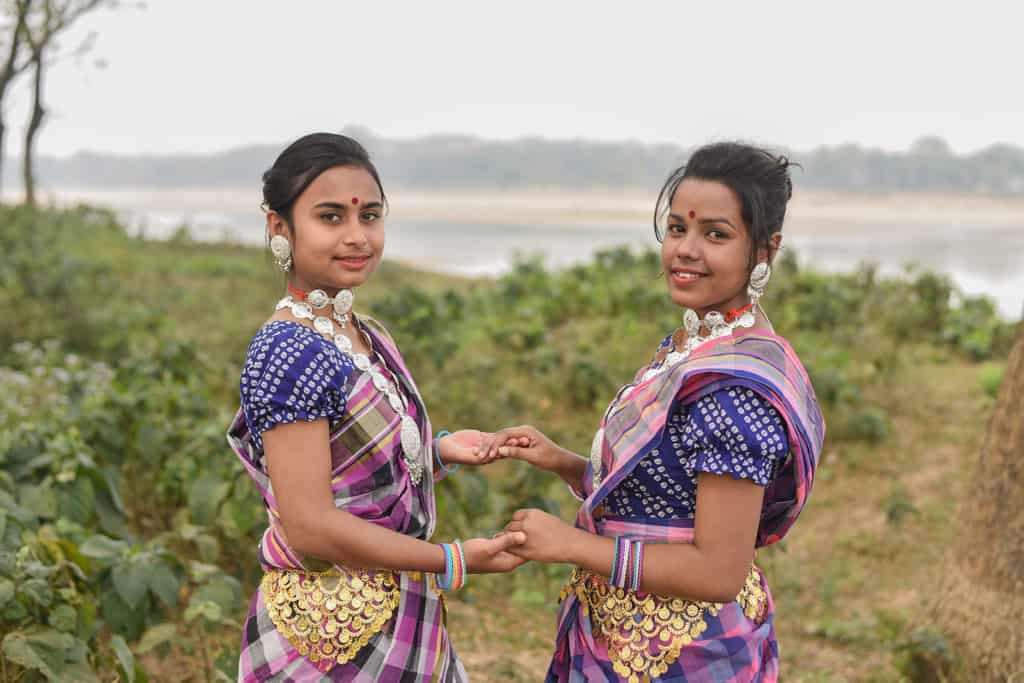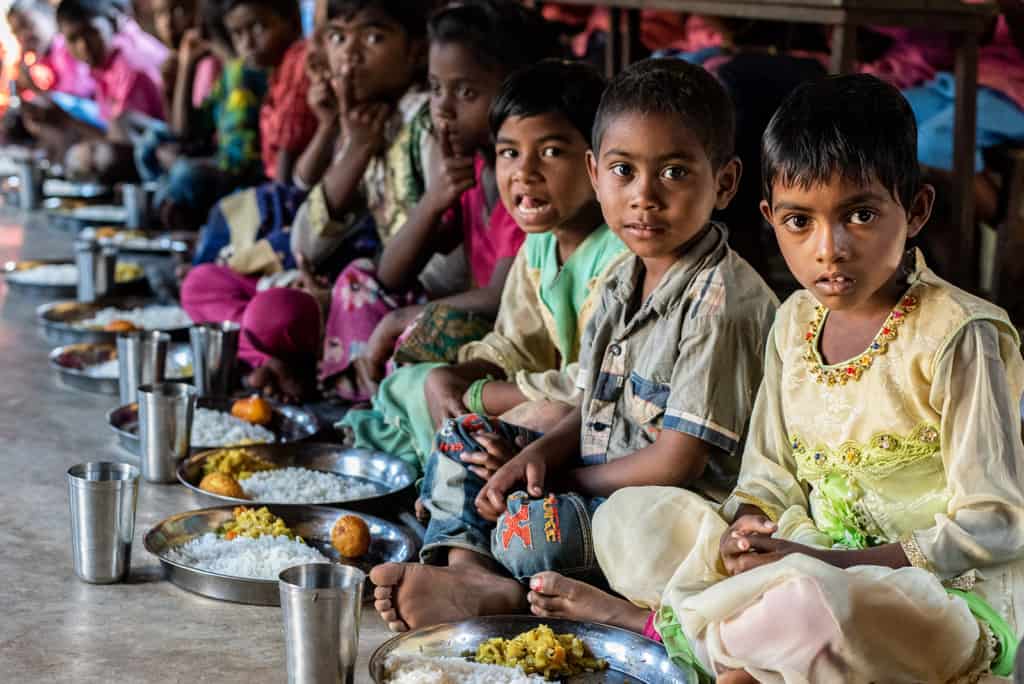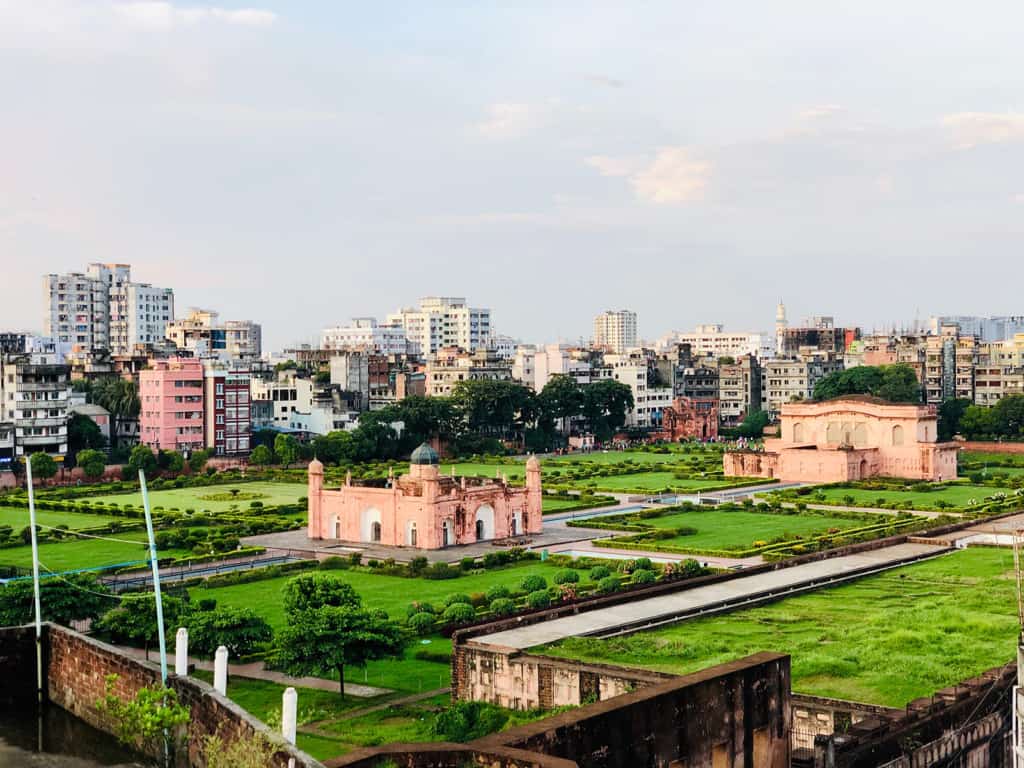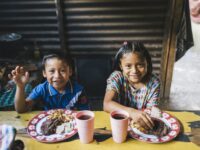
Bangladesh is a country full of green hills, coursing rivers, delicious food and vibrant storytelling. Located on the Indian subcontinent, Bangladesh is positioned between the towering Himalayas and the stormy Bay of Bengal.
If you visited, you could walk down Cox’s Bazar, the world’s longest natural beach, or you could travel to the Sundarbans Reserve Forest, the largest mangrove forest on Earth. In addition to its natural beauty, Bangladesh is known for its folklore, artistry and traditions.
Keep reading to learn more fun facts about Bangladesh and gain a deeper understanding of this amazing culture where tens of thousands of Compassion-assisted children live.
Key Facts About Bangladesh
Here are some quick key facts you should know about Bangladesh:
- Population: Over 174 million (April 2024).
- Capital: Dhaka.
- Official language: Bengali.
- Area: 57,320 square miles (148,460 square kilometers). That’s about the size of Pennsylvania and New Jersey combined.
- Economy: Bangladesh is known for its garment industry. In fact, more than 80% of the country’s exports are garments. Over 40% of the labor force works in agriculture, growing rice, jute, tea, wheat, sugar cane, potatoes and more.
Bangladesh Culture & Traditions
Bangladesh contains large cities with stunning architecture as well as many rural villages. Many Bangladeshi people share similar cultural and religious values. In fact, 98% of the population is Bengali, both a language and an ethnic group.
Heritage and traditions are highly valued in Bangladesh and inform everyday life. Let’s dive into some more interesting facts about Bangladesh culture.
Religion
Around 91% of Bangladeshi people identify as Muslim. This makes Bangladesh one of the largest Muslim countries in the world.
Clothing
In urban areas of Bangladesh, many people wear clothing styles like what we wear in the U.S. However, in the countryside, many wear traditional garments, and a vibrant weaving and dressmaking culture flourishes.
Saris are common garments for women and are made by draping a length of cloth to form a skirt and top. Men traditionally wear punjabis — knee-length cotton dresses. They may also wear cotton shirts called fatuas.

Bangladesh Folklore and Traditions
Bangladesh is home to abundant folklore and artistry. Songs, riddles, proverbs and epic tales are inherited from past generations. In villages and towns, women make nakshi kantha, an embroidered patchwork cloth that relates stories and myths through elaborate stitches.
Local legends are told through a style of opera called jatra. Poetic folk tales are read from puthis, a type of ancient manuscript, for entertainment and education.

Music and Dance of Bangladesh
Bangladesh has a rich musical and artistic heritage. While there is great diversity, Bangladeshi music and dance styles can be divided into three general categories: folk, classical and modern.
The folk music of Bangladesh is characterized by devotional mysticism, prayer and folklore about love. Simple, spontaneous folk dances are passed down from generation to generation. Traditional instruments include:
- Banshis (bamboo flutes).
- Dholes (wooden drums).
- Ektaras (single-stringed instruments).
- Dotaras (four-stringed instruments).
- Mandiras (a pair of metal bowls used as rhythm instruments).
Bangladeshi classical music is based on ragas, a melodic improvisational framework. Classical dances include complex tempos, rhythms and gestures but allow for some improvisation.
Modern Bengali music is also popular. In many songs, Western and Eastern elements are mixed to form a vigorous, spontaneous style. Rock and pop bands with Middle Eastern influences have become popular in urban areas like Dhaka.
Food and Drink of Bangladesh
The cuisine of Bangladesh reflects the creativity of its people. Many meals will have a rich, spicy flavor and contain fish, beef, chicken or eggs. Rice is a staple of the Bangladeshi diet and is often served with vegetables and lentils.
In the northern and western regions of the country, curry is popular and considered the national dish. The eastern region enjoys dishes made from bamboo shoots, dried fish, coconut and sour sauces.
Bangladesh is also famous for its delicious desserts and sweet drinks! You’ll find a variety of cakes, rice puddings, yogurt beverages, teas and more. Here are just a few of the meals, desserts and drinks that will leave your mouth watering.
- Jhal muri is a great choice when you need something in between meals. This snack is made from puffed rice and chanachur, a bagged snack mix of fried lentils, peanuts, noodles, corn, flaked rice, chickpeas, fried onion and spices. This spicy, crispy snack is loved by both children and adults in Bangladesh.
- Payesh is a great dish to bring to an event in Bangladesh! It is a pudding made from boiled milk, sugar, rice and spices and is commonly served at ceremonies, feasts and all types of celebrations. Learn to make payesh and bring it to your next party!
- Panta ilish is a dish that combines fried ilish fish with a type of soaked rice called panta bhat. Like many Bangladeshi foods, panta ilish is well seasoned with turmeric, chili powder and other spices. The ilish is the national fish of Bangladesh and is also a popular choice in fish curries.
- Lassi is a delicious Bangladeshi drink made from a blend of yogurt, water, spices and sometimes fruit, such as mangos. This cool refreshment can be made sweet or salty and is popular in the hot weather of Bangladesh.
Want to learn even more facts about Bangladesh? Check out this guide to dive deeper and discover ways you can support vulnerable children in Bangladesh.
A Child Development Center Breaking the Bonds of Poverty
There is great beauty in Bangladesh, but many people in this country are trapped in extreme poverty. Many children have limited access to health care, education and basic necessities like food.
Lipon was a young boy like this. In his impoverished Bangladeshi community, expectations for children were simple: Once they completed 10th grade, they would marry and work on the family farm, which typically produced only enough to sustain them from one harvest to the next. Children weren’t free to dream. Instead, they were expected to marry young and begin work in the rice fields.
But Compassion’s partners at a local child development center had a new vision: a vision for changing the community by empowering children to create brighter futures for themselves. Child sponsorship through Compassion, with its program that cares for children in all facets of life, was key to this vision.
Through the support of his child development center, Lipon received nutritious food, tuition, books, supplies and health checkups.
Lipon’s parents were grateful for these new opportunities and were amazed that a stranger from a different country had chosen to sponsor and encourage their son.
“My son’s time at the center has been a huge blessing. It has given him the ambition to go far. And we are willing to come alongside him to continue what his Compassion sponsor started.”
— Sukumar, Lipon’s father
Lipon faithfully attended school, and after classes, he would go to the Compassion center for activities like sports, music, games and extra tutoring. Lipon, now a graduate, is looking forward to completing his education in mechanical engineering and embarking on a meaningful, self-sufficient future. In short, he has broken the cycle of poverty!


Help Us Release Children Like Lipon From Poverty
Compassion partners with the local church in Bangladesh to release children like Lipon from poverty in Jesus’ name. Want to join us in being Jesus’ hands and feet in Bangladesh? Sponsor a child today!








We originally published this post on August 3, 2020.







7 Comments |Add a comment
An excellent post! Thank you for this insight! It helps connect me to the work being done so many miles away!
Wonderfully done. Thank you for your faithful service!
Thank you for doing this. I really appreciate knowing more about the country where I sponsor my Bangladeshi child. I am grateful for all you do!
Thank you for the posting. I truly enjoyed seeing the country, culture and customary foods of my sponsored child. I love her and appreciate learning about her country, Bangladesh! Keep up the great work. You all are greatly needed and appreciated.
Thank you for sharing this information about Bangladesh. I really
enjoyed it. My child I sponsor has been a blessing in my life.
Thank you for the details. It’s good to stop and think about life on the other side of the world… Not just the struggles, but the beauty of their land and customs.
I loved reading this as I sponsor two children from Bangladesh. Thank you!